Control of short vs long range accuracy depends on how close to the gas block you have your barrel. The 300 blackout was designed for close range shots, and they work best in a short barrel rifle or pistol configuration. This means a shorter barrel is in need, and is available in lengths as small as 4.5 inches or as long as 16 inches- although a 16 inch barrel may not have as much overall power. The 10" has a pistol length gas system, the 16" has a carbine length gas system.
I believe the port on the carbine length is sized differently . My understanding is adjustable gas blocks may be necessary when using different powders with subs. Of course I also had to work up the load so that they would operate the bolt and lock back, in addition to accuracy testing, but all factory loads operated both uppers, no problem.
You can do a web search to find out what size gas port you need for your gas system length, different manufacturers use different sizes. With 300 Blackout and its subsonic capability, people like to do cool things like use shorter barrels, say significantly less than 16 inches. The bullet is gone just as things start to operate and pressure drops too soon. With the port closer to the chamber, there's a longer period of awesome pressure time between the time the gas reaches the port and the bullet leaves the barrel. Lotsa gas and plenty of time means reliable operation of the action.
That did more to spark interest in NFA items than anything. And adding a foot-long can to a full-length rifle is not optimal, particularly when you can push a 220 grain bullet to just under the speed of sound in six inches or so. If you build an AR pistol, the 300 is the perfect round. Its not going to be long until you want to suppress it and/or SBR it.
If you start with wanting a suppressed gun, you will eventually get to the 300. Since the paperwork and tax didn't kill you, and they already have your fingerprints, you're gonna want to SBR it. Any time you put a can on a rifle, an adjustable gas block will allow you to tune it. I came here for a clue about what barrel to get for a pistol build, but I know once I have it I'm going to want a real stock and a suppressor.
Relatively speaking, the 300 Blackout is better suited to shorter barreled guns; in fact, it was designed for exactly this task. With most loads, a 9-inch barrel is enough bore for a complete powder burn. That said, like every cartridge, it gains velocity out of longer barrels to a certain point. Don't be fooled, a 16-inch carbine in Blackout will outperform a 9-inch Blackout pistol.
Dependent on load, firearm and environment, expect anywhere from a 250 fps to 350 fps difference between the lengths. So here's a rough rule of thumb for 300 Blackout guns. If your gun has a 16-inch barrel, a carbine length gas system should work just fine with supersonic and subsonic loads – especially if you use a silencer. Some rifle makers, like Noveske, use pistol length gas systems in their 16-inch barrels, which other makes use carbine length. If you are going to buy or build a short length barrel gun, less than 16 inches, do yourself a favor and choose a pistol length gas system. Here is the old barrel length again… Longer barrels have been proven to have better velocities and it depends on your burn rate on your powder whether you get the full use of your barrel.
The AAC uses a similar weight and dimensional bullet as a 30BR and 20 inch barrels and longer are the standard for those highly accurate bolt guns. A 30BR pushes from 107 grains to 120 grain 30 cal projectiles. The 30 BR is expected to shoot sub .5 MOA out to 300 meters and weight is at a premium for most of these guns. A lighter gun via barrel would allow more other things to be used. But shortening the guns usually has resulted in less accuracy.
[/QUOTE]And no, i don't have specific data for each inch of barrel length and it's affect on velocity with supers. 300 blk was designed to be efficient out of short barrels, so it's a game of diminishing returns. With a .30 caliber bullet the barrel length at which you get diminishing returns is much shorter than most other rifle cartridges. The major question still comes down to whether you plan on using a silencer or not.
In the first paragraph, the author describes the .300blk round, and says "The round is tougher, stronger and flies further than 5.56mm NATO." Tougher? Yes, but to the main point… The .300blk does not fly farther than 5.56mm. The .300blk is basically a trimmed down 5.56mm case to accept 30 caliber bullets, over 200 gr. It is filled with fast burning pistol powders to achieve rapid and complete burn in short barrels. Combine minimal case volume with overweight bullets, and you get "rainbow" like trajectories. The .300blk is effective up to 300yds, while 5.56mm is efective up to 500yds.
Even at those sub 10″ barrels I doubt the .300blk goes any further. Regardless, you do not choose .300blk for long range, it is designed to be a close quarters round for suppressed sbr's, that hits harder than 9mm or 5.56mm. We'll keep checking for Blackout subsonic and supersonic ammo that breaks the cost and performance barriers with a differing bullet weight and Full Metal Jacket. Open tip bullets, hollow point alternatives, full metals jacket brass bullets, we got all the BLK ammo that handles bullet drop, as well as ammo for suppressed rifles and pistols. So sign up in the top bar to keep up with the latest info on availabilityu of blackout ammo and bulk ammo deals on hollow point ammo and firearms. In a standard 5.56mm AR-15, cartridges perform within a relatively narrow band of performance.
As a result, gas pressure performance is somewhat predictable and rifle makers can design gas ports to operate reliably. With the 300 Blackout, and its huge range of ballistic options, finding a gas system design that works with supersonic loads and bunny fart subsonic loads can be a real challenge. If too much gas is allowed, the supersonic rounds can create excessive wear and tear on the rifle.
Too little and subsonic rounds may not generate enough gas to reliably cycle the action. With 300 AAC Blackout gun design, there's a constant tradeoff between reliability and gas pressure. Start doing things like changing the barrel length and things get even crazier. The Odin Works 300 Blackout Medium Profile barrel comes in 10.5 inch and 16.1 inch lengths both with pistol and carbide gas systems to help you match accuracy with power. These medium profile barrels are specifically designed with a tunable gas block to provide you dependable performance with subsonic ammo.
The 300 Blackout is an excellent mix of power, ballistics, and range. All of these qualities can be harnessed using the right barrel. The length directly affects the velocity of the projectile, accuracy, noise, and recoil of a weapon.
While searching for a good 300 Blackout barrel, you must consider features such as material, contour, profile, length, gas system length, weight, and twist rate into consideration. If you are looking for a short pistol length barrel for your .300 Blackout AR-15, you'll want to take a close look at the Palmetto State Armory 10.5" CHF .300 Blackout pistol gas barrel. This barrel is hammer forged out of chrome moly vanadium steel and is also chrome lined on the inside of the barrel in order to extend its overall service life. The chrome lined barrel is considered to be military standard for this same reason. A big advantage to the .300 Blackout is that it allows a user to use only one caliber while switching between barrier penetrating, subsonic, and supersonic ammunition all the same time.
Most factory ammunition, both supersonic and subsonic, contains a powder charge that completely burns in a barrel between 9-10" long. There is no need for a .300 Blackout firearm to have a barrel longer than 10.5". Longer barrels provide minimal muzzle velocity, but they add weight. Some weight can be beneficial to combat recoil, but a rifle that is too heavy is cumbersome. For velocity and accuracy testing, I used a combination of everyday ammo like American Eagle 55-grain FMJ and M855 Steel Core, and Norma 77-grain Match ammo.So why does this happen?
It's almost certainly not because the "powder didn't have enough room to burn." Generally speaking, all the powder THAT IS GOING TO BURN does, in fact, burn in the first few inches of barrel length. What it does tell us is that the gas cloud is still expanding faster than the volume of the barrel is increasing when the bullet exits a 16-inch barrel. In other words, pressure is still building when we run out of barrel in the 16-inch rifle, so some of that pressure is wasted. There is one other variable that probably contributes to this difference. This 8.3 inch premium barrel has a medium profile and is built for a gas pistol system.
With a 1-8 ratio twist, and .750 gas block seat, this option provides a powerfully accurate option for both short range, and longer range shots. With a black nitride coating both in and out, the smooth, sleek look of this option gives you the power you need for a quick shooting response. First off, there is no "explosion" with smokeless powder, it burns at a controlled rate. The hot flaming gasses are traveling at the same speed or slightly faster than the projectile, when they hit the still air at the muzzle, the collision causes the bang. A suppressor does not "handle the explosion", it gives the gasses a place to expand and slow down to subsonic speeds.
The next point is if you can't make an "ethical" shot on a game animal with subsonic ammunition, then why would you consider it for combat? An enemy combatant that escapes can shoot at you again. All of this is basic physics, there is no magic when it comes to how gasses or projectiles act. No projectile/case option is ideal, they all have pluses and minuses and are a compromise in some way. If you need to shoot a .30 cal then an AR-10 in .308 is the way to go with the trade off of more recoil and heavier ammunition.
Based on the data above, it appears that for subsonic loads such as 220 grain (where the .300 BLK really shines), barrel length can be an afterthought, particularly if you plan on using a suppressor. Something like a 7.5" barrel with an appropriate 7 to 8 inch suppressor would allow for a package that is still shorter and a little handier than a typical 16" barrel setup. Keep in mind that many manufacturers will not warranty their suppressors on barrels shorter than around 7.5 inches. This would still make a handy setup for military and law enforcement applications, as well as home defense or just a fun recreational setup for novelty. Running the bbl with 762SDN6, MilSpec BCG, Carbine Buffer, & Spring.
I built the upper as a dedicated suppressor host for subsonic ammo. The only ammo I've found so far that cycles the action is American Eagle 220gr Suppressor . Am continuing the search for more reliably ammo as I do not want to lighten the action components if I can find some preferred ammo. Will explore springs and buffer before BCG if need be.
No gas in the face with any tested ammo while using Raptor-SD and cheap AIM Sports low profile gas block. Good barrel, just keep in mind you may have to spend some time and money tinkering with different ammo unless you want to spend money on lighter action components. The 10.5" short barrel has a heavy profile and can be used for short range hunting and tactical applications.
The barrel shows optimal heat dissipation and has been designed and tested to military specifications. The design and profile of the barrel make it ideal for short range hunting and tactical applications. This is a heavy profile barrel, however, the length does reduce the weight by a considerable amount.
Sticking with .308s for a moment, let's look at a cartridge whose performance and use depends heavily on barrel length and twist rate. Since 300 BLK is made to be fired supersonic or subsonic, suppressed or unsuppressed, it comes with a huge spread of grain weights. Picking a twist rate will depend exclusively on what type of 300 BLK you chamber most often. In fact, depending on what twist rate you select, you may be able to shoot only supersorsubs, but not both.
Barrel length directly affects the velocity of your cartridge. If your barrel's too short, the gunpowder in the shell casing won't have enough "burn time" to accelerate the round downrange, and your round won't reach optimal speed. This will result in the round dropping too quickly and/or being affected by wind drift more than it should. Total effective range will be dramatically reduced, and you'll have less energy striking your target. A lack of energy is of particular concern in self-defense and hunting situations. The shorter the gas system, the more reliably your sub gun will cycle suppressed, subsonic 300 BLK loads.
However, the internal profile of the barrel and the number of grooves also have an influence. In practice, it is therefore not easy to obtain objective data on the interaction between barrel length and ballistic performance. It also has a carbine-length gas system, which gives the projectile a boost in velocity. A.750 inch low profile gas block, carbine gas hose, and a roll pin are included with the kit. The steel gas block helps you to build a personalized rifle that meets your needs. Clamp-on and slide-on versions of the kit are available.
The cartridge is designed to run on shorter barrel lengths with full powder burn happening by 10 inches. When deviating from the norm, gas control becomes an issue. If you want to run a short pistol length or a longer rifle length barrel installing an adjustable gas block will make tuning the weapon much easier. Suppressed fire, for which the 300 Blackout was intended, may require additional compensation by changing the buffer. Obviously, a heavier buffer will somewhat slow the weapons cycle rate resulting in greater reliability. Basically, the shorter the distance that the gas has to travel the more reliable the weapon is going to cycle.
Keeping that fact in mind the best .300 Blackout barrel to run would have its gas block as close as possible to the action. This means if your shooting requirements allow you to run a carbine or pistol length barrel you can expect better overall results. After all the 300 Blackout performs at its best when incorporated in an SBR or a pistol configuration.
The 300 blackout delivers a large caliber bullet to the target with minimal noise and recoil. This results in more weapon control and faster reacquisition of the target in a multiple shot scenario. When correctly deployed this combination is the dream gun for law enforcement, the military in close quarter battle situations, as well as fast-paced, three-gun competition.
It also has a carbine-length gas system, so the projectile gets an extra push for velocity. The package includes a .750 inch low profile gas block, carbine gas tube, and a roll pin. The steel gas block allows you to build a custom rifle depending upon your requirements. The kit is available in clamp-on and slide-on models. If we add the stock and it becomes an SBR, then it's a "RIFLE" and it falls under even more restrictions.

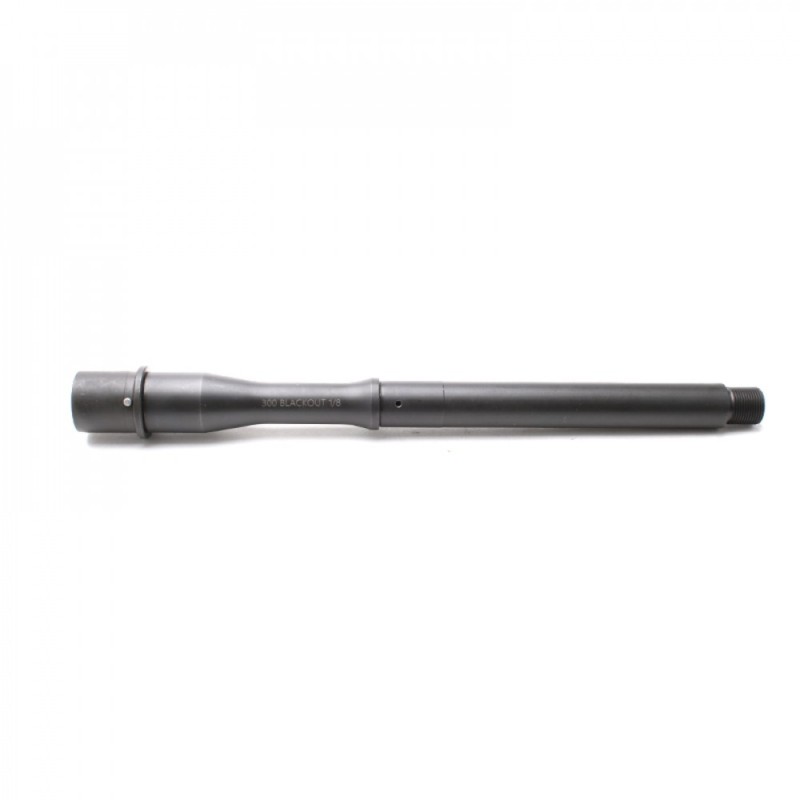



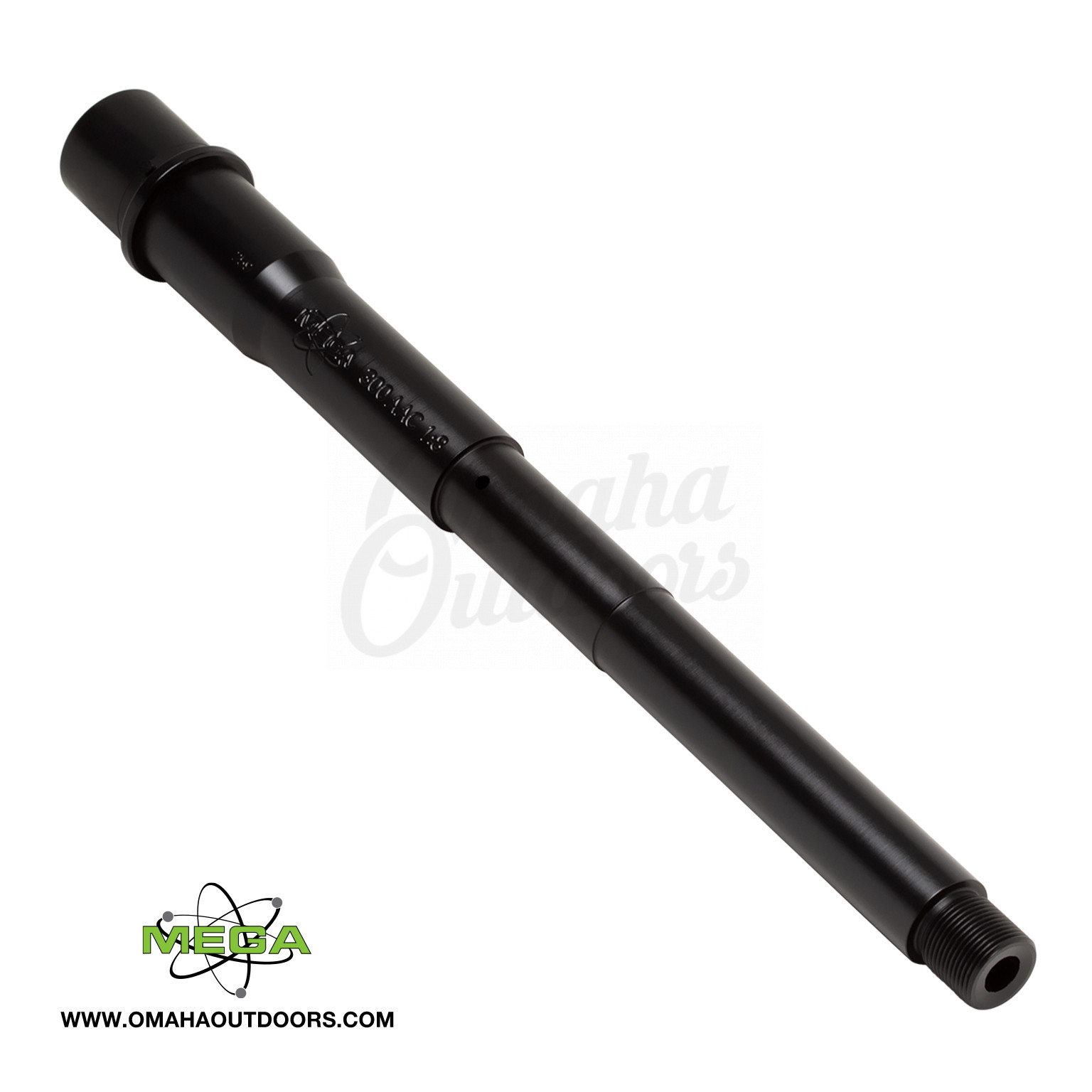


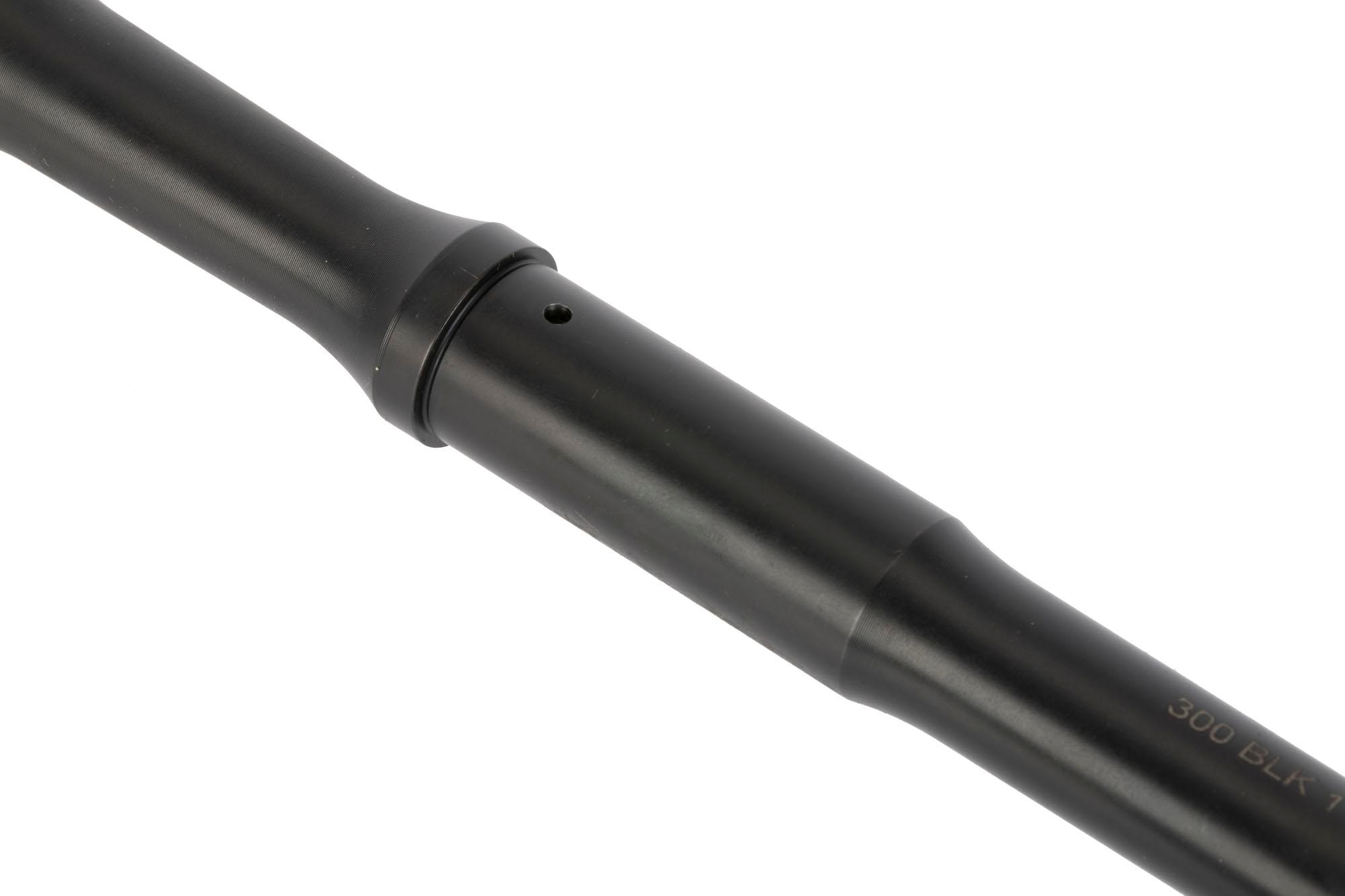





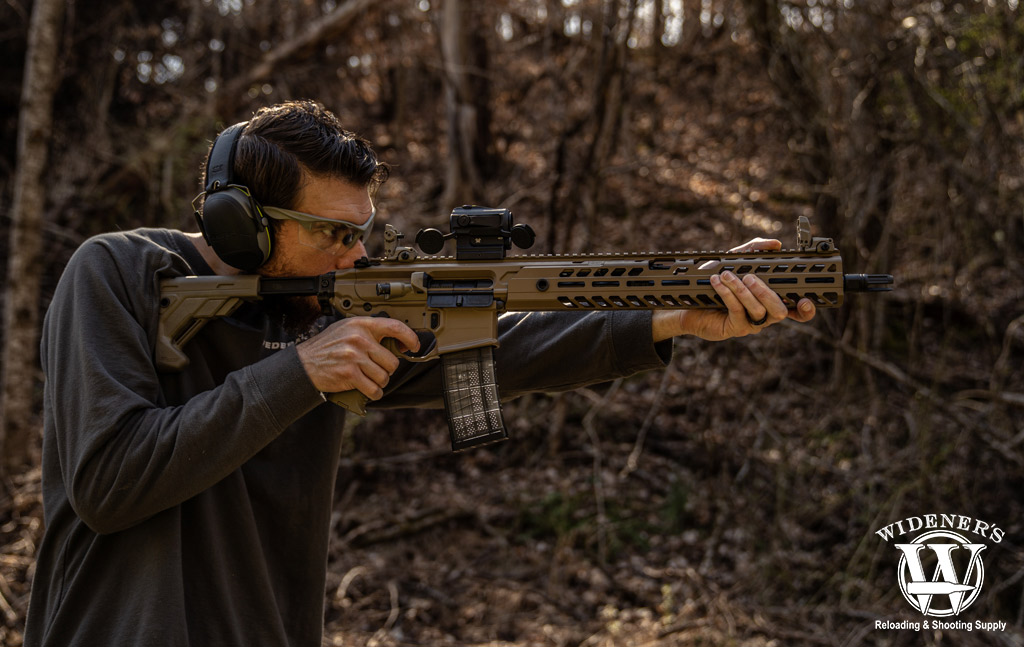
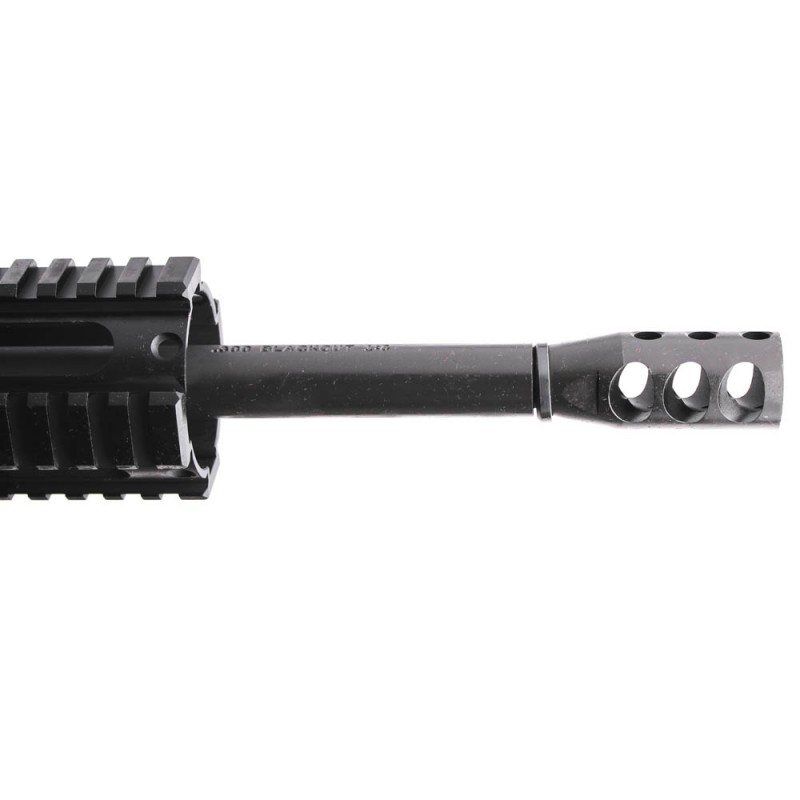
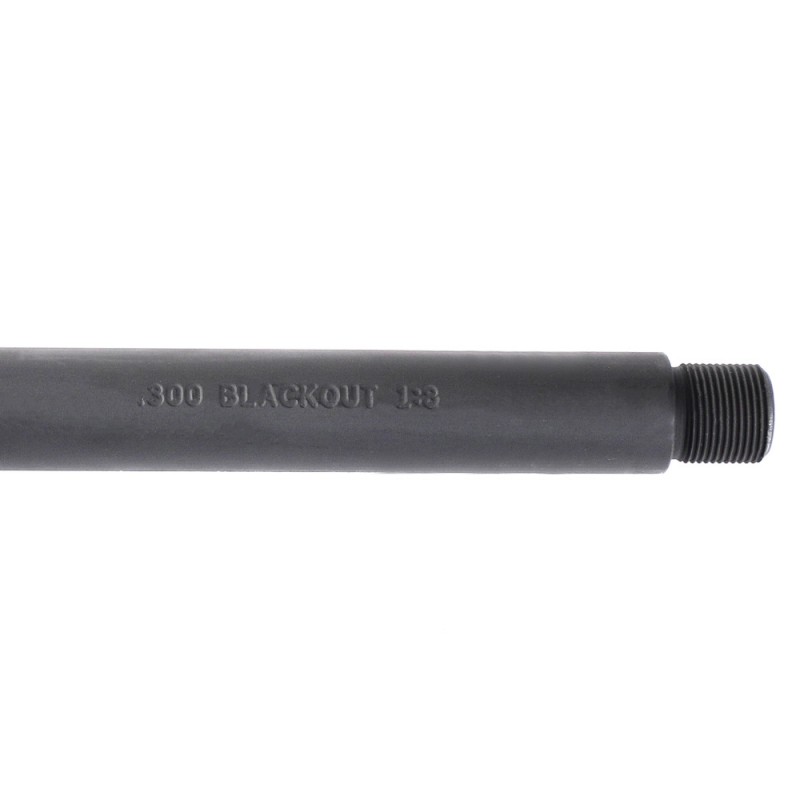




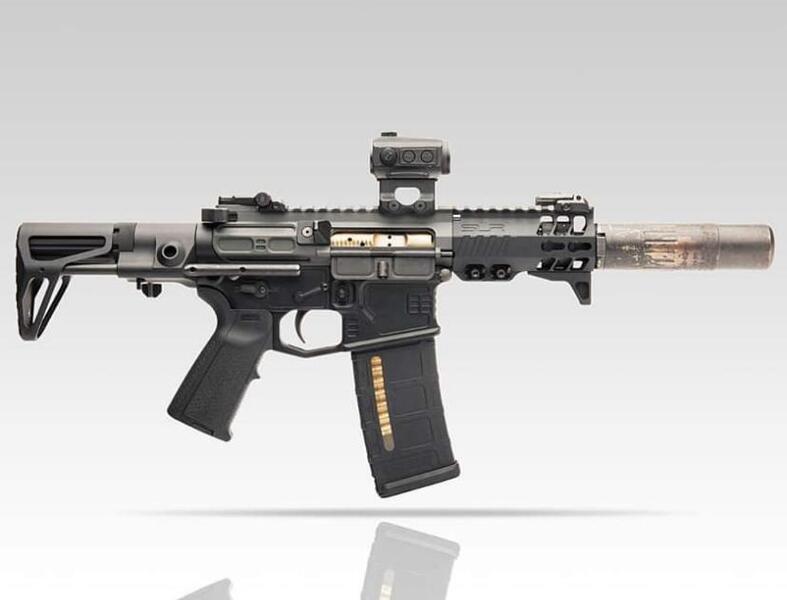

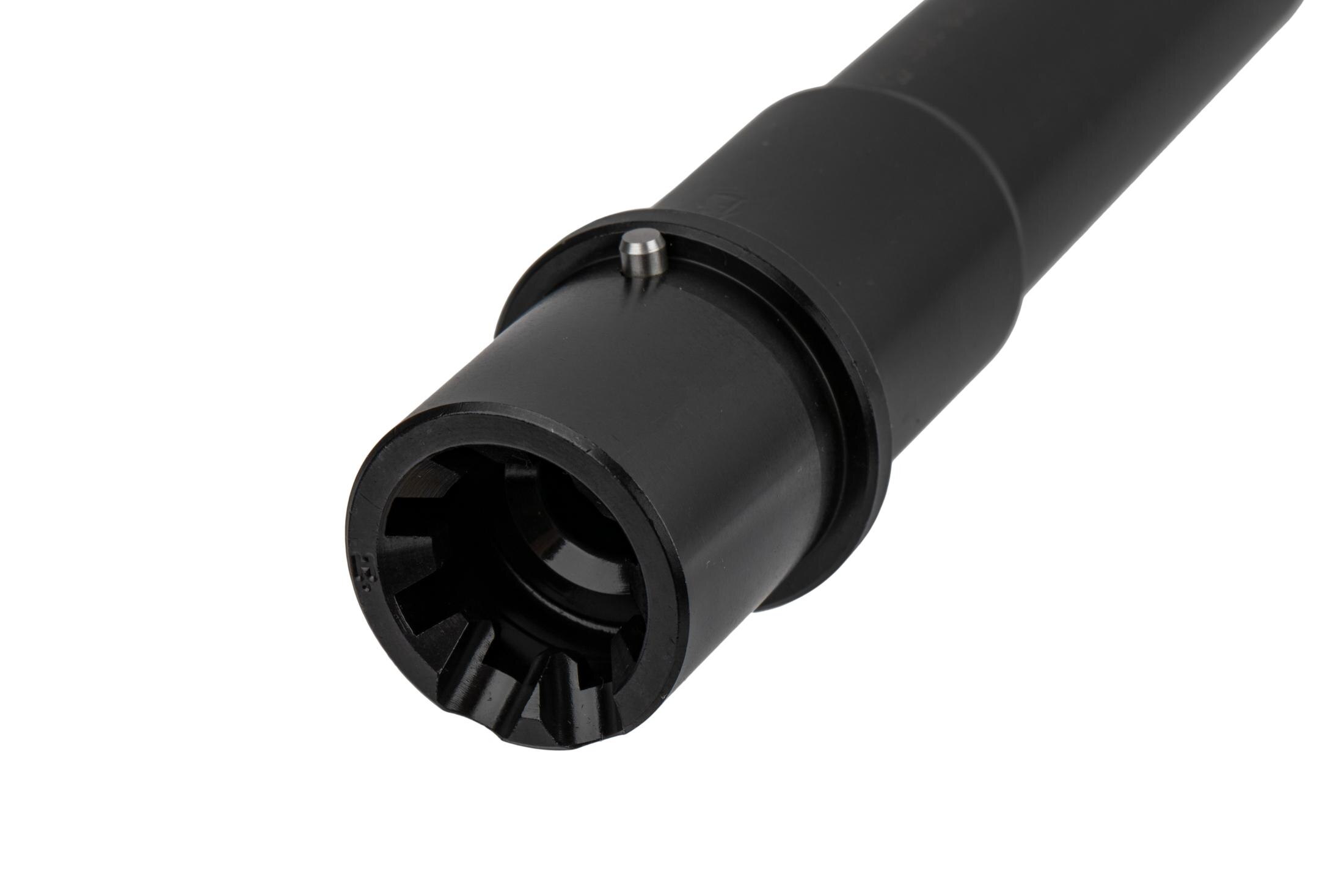
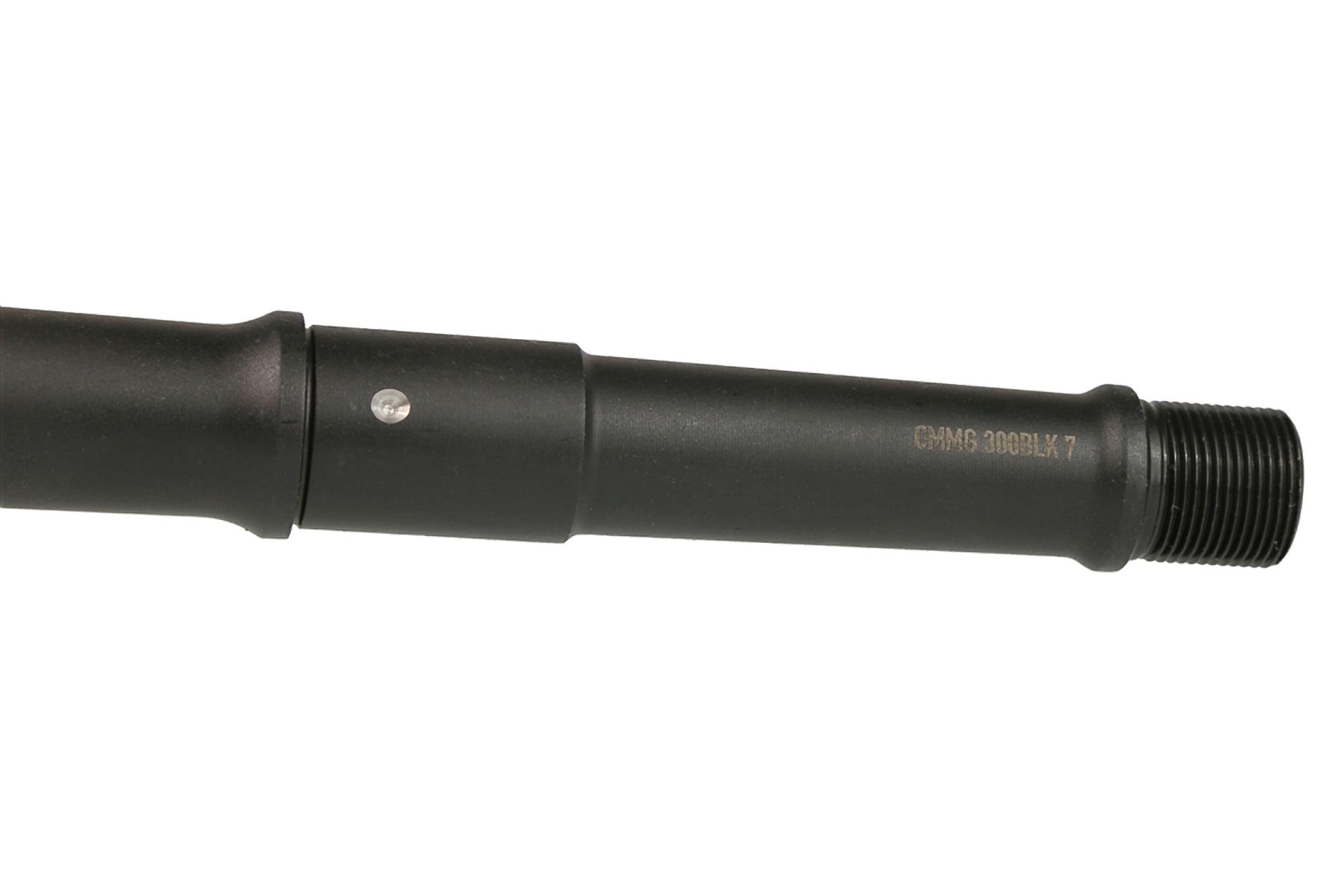
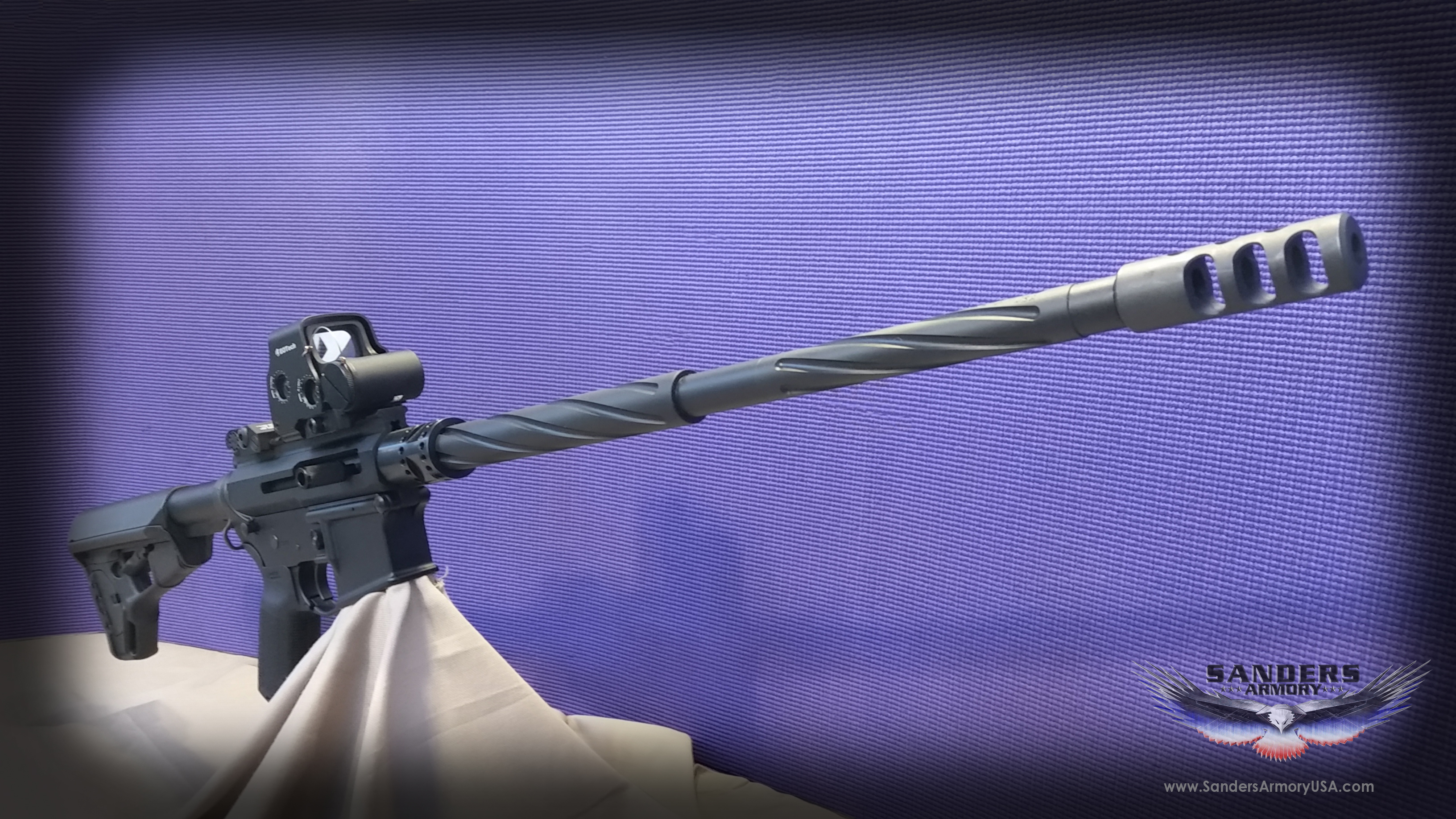

No comments:
Post a Comment
Note: Only a member of this blog may post a comment.